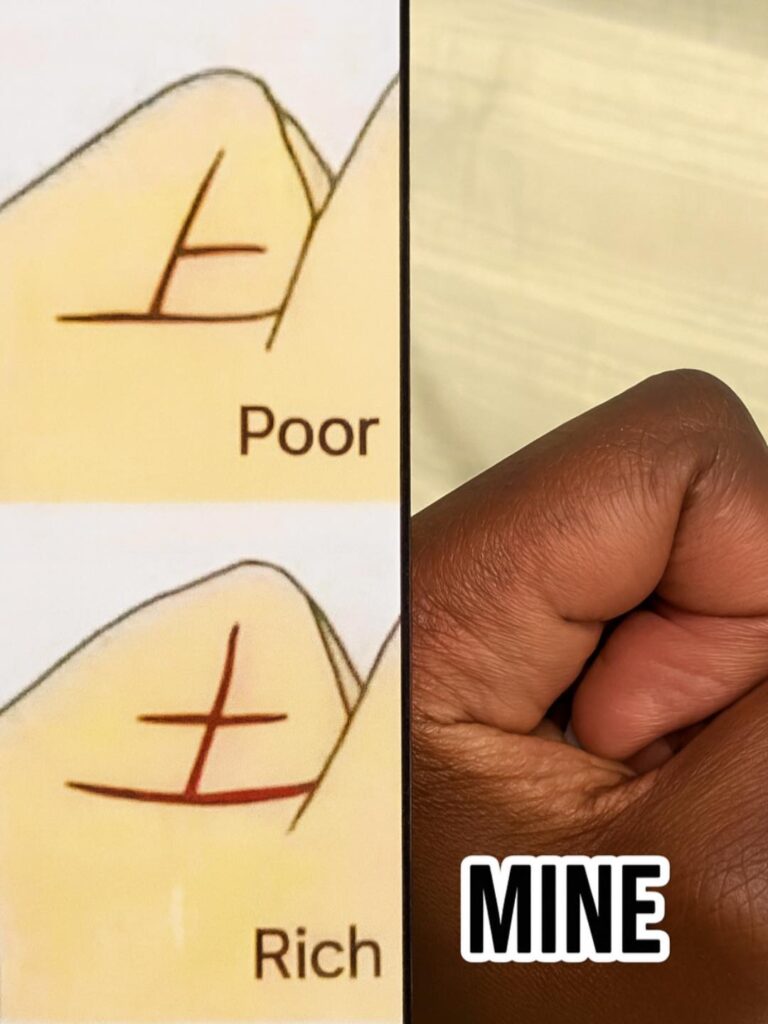Palmistry Explained
Palmistry, or chiromancy, is the art of reading the lines, shapes, and markings on the hands to understand personality traits or even predict aspects of life. Across cultures, many believe that specific lines on the palm can hint at luck, character, and yes — even financial fortune.

The top half of the image shows a closed palm with a crossed line near the thumb, marked “Poor.” According to this interpretation, certain markings on the hand are thought to be associated with a lack of financial abundance.
The bottom half displays a different set of crossed lines, labeled “Rich.” Here, a deeper, more prominent cross is said to indicate wealth or financial success, suggesting that your hand might symbolically reveal your monetary destiny.
Cultural Significance
Across the world, palm lines have been interpreted in various ways. Some traditions hold that specific intersections, crosses, or patterns reflect destiny, including financial luck. In this illustration, the lines humorously or symbolically suggest that your wealth could be “written” in your palm — a notion deeply rooted in folk wisdom and cultural storytelling.
Skepticism and Modern View
While palmistry has a rich history, modern science approaches it with skepticism. Today, many consider it a pseudoscience or simply a fun, entertaining way to explore personality and fortune rather than a reliable predictor of wealth.
Even so, the fascination endures. Whether you see it as mystical insight or playful tradition, examining your palm can spark curiosity about yourself — and maybe even inspire a smile about the “riches” hidden in your hand.
